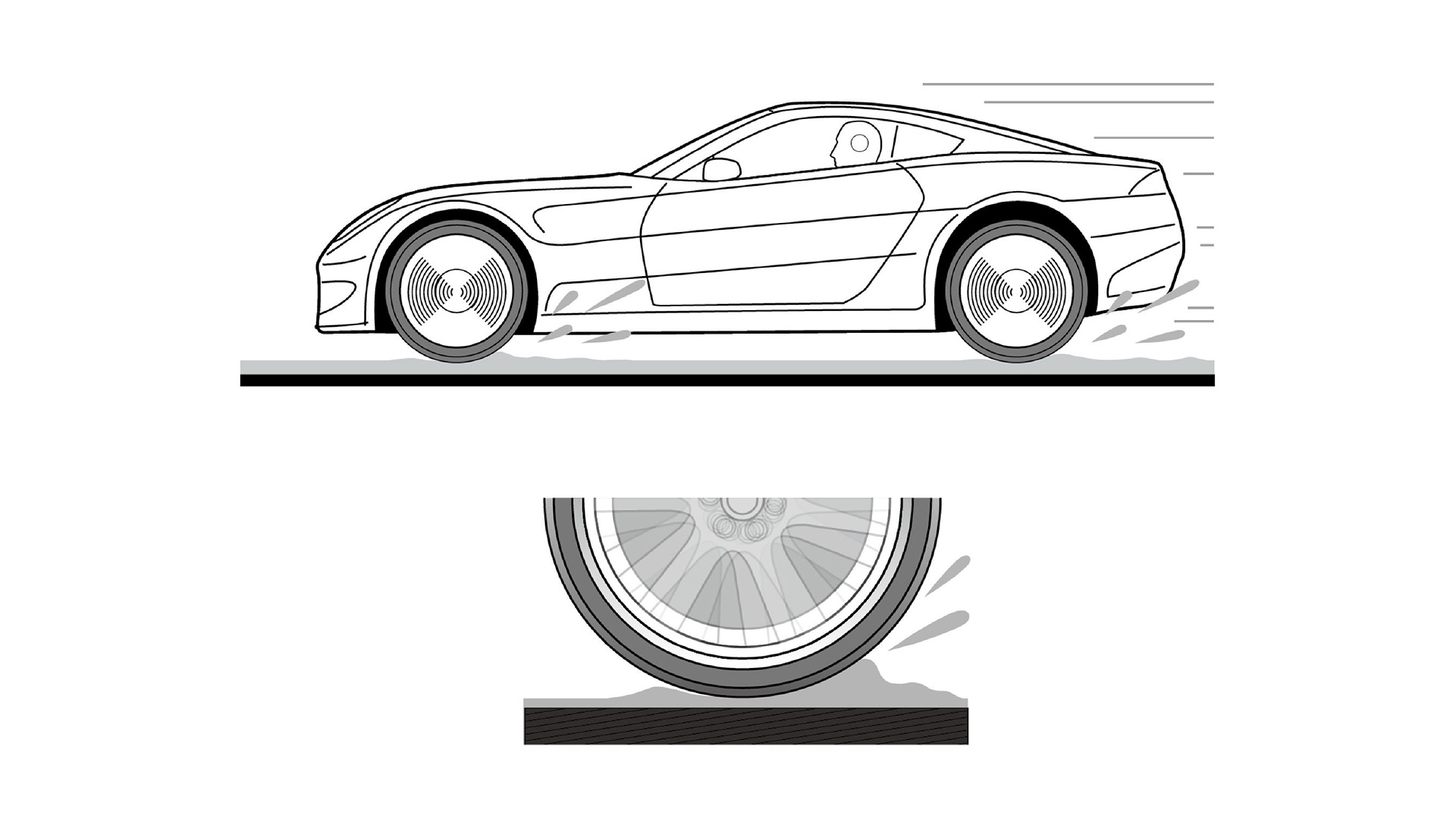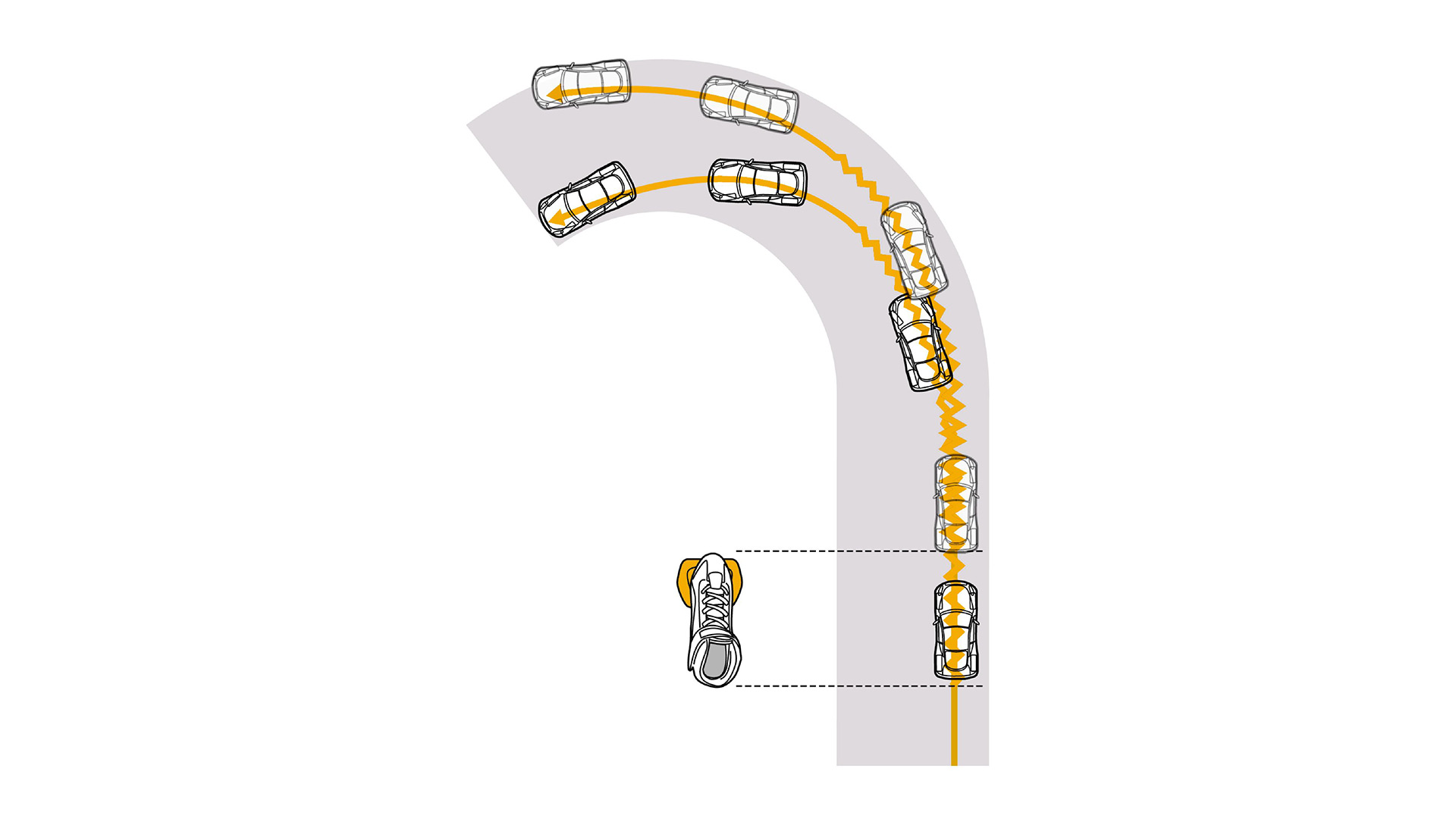How to Drive on Slippery Surfaces
Driving techniques & manners 15
Pay attention to speed and extreme load changes

Races on wet surfaces are hard. This is not just because the grip of the surface is low – it is because the grip will be uneven. Under wet conditions, the characteristic of the surface will change constantly according to temperature and the amount of rainfall. In high-speed ranges, the tires will not be able to push aside the water fast enough, and will lead to hydroplaning; where the tires will ride on top of a layer of water. Not only does this make the car slower, it can also send cars off the track.

Fig.15-1 Under wet conditions, tires may not be able to push the water aside fast enough due to the vehicle’s speed. This can cause hydroplaning (where the tires ride on a layer of water)
However, if you use this slipperiness to your advantage, it will become possible to make up for a lack of a car’s performance with your driving technique. For this to happen, you again need to be in the proper driving position and really hone your senses to feel the slipping of a car. You need to judge the condition of the tires and road surface from the feedback you feel through your hips and the steering wheel.
In addition, you need to stop yourself doing anything too rapidly - applying the accelerator and brakes delicately and steering with care. Keep in mind how you will handle understeer and oversteer, and be ready to respond to any unwanted slippage immediately.
One of the most difficult things about wet conditions is cornering. To prevent understeer due to over-speeding, set your braking point during corner entry further inside on the track, and be sure to adequately decelerate.
There are cases where the driving line will differ greatly due to wet conditions. On a dry surface, you would drive the record line (the fastest driving line), but under wet conditions puddles may form on the inside of the track. In such cases you would run a driving line that does not go inside on the track. It’s also important to remember that driving lines where many cars have passed under dry conditions will have a layer of melted tire rubber on the track, and have a very high grip; during rain, these lines will become more slippery than others.

Fig.15-2 Under wet conditions, tires may not be able to push the water aside fast enough due to the vehicle’s speed. This can cause hydroplaning (where the tires ride on a layer of water)
Though we have stressed the importance of careful driving, this doesn’t mean you want to hold back. You should raise average speed while making sure you don’t drive in a way that causes an extreme change in speed or load. If it is during a race, check the status of cars around you and race in a way that allows you to take advantage of any opportunities that arise.
